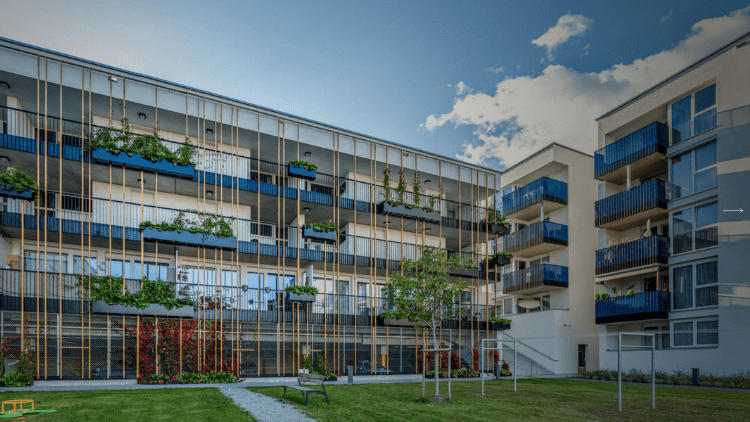
Providing affordable housing is not only doing the right thing. There is an economic spinoff for everyone.

Much applied economic analysis and policy-making in recent decades has been based on the belief that under (perfect) market conditions unregulated markets lead to the best economic outcomes, in terms of the allocation of products and services to society at large. Developments in the housing market—and in particular the crisis of affordability—have however placed a big question-mark against this assumption.
The impacts of the housing crisis are no longer felt only by those households struggling with its cost but also by the economy as a whole. As a recent report from the European Commission explains, inflated house prices and rents can lead to a misallocation of resources, away from productive (job-creating) investments towards unproductive assets.
At a time of labour shortages and economic uncertainty, housing needs to be seen in the wider context of economic challenges, as well as a matter of social policy. Two recent studies on the limited-profit housing sector in Austria can teach valuable lessons about the real cost of housing and how the efficiency of housing markets is linked to economic outcomes.
Far-reaching consequences
How much it costs to provide good-quality housing is surprisingly absent—given its high cost in many cities across the globe and the decoupling of house prices and rents from incomes—from most debates. Ignoring this link between costs and prices has however had far-reaching consequences for middle-income households and the public purse.
Become part of our Community of Thought Leaders
Get fresh perspectives delivered straight to your inbox. Sign up for our newsletter to receive thought-provoking opinion articles and expert analysis on the most pressing political, economic and social issues of our time. Join our community of engaged readers and be a part of the conversation.
When public authorities invest in infrastructure or the improvement of neighbourhoods, the resulting uplift in land values, and so house prices and rents, has mainly been captured by landowners and developers. Austria’s solution is its cost-based, limited-profit housing system, run by third-sector organisations, in addition to public and for-profit housing.
Rents in this system are set to recover all investment costs, plus management of the building. Discrete surpluses are possible but limited-profit housing associations must reinvest them to the benefit of new and existing residents. Instead of furnishing windfalls to shareholders, surpluses are channelled into productive investment, which also creates jobs.
Housing associations in Austria provide shelter for around one in seven households and their share reaches a quarter in urban areas. The associated rents at cost send a significant price signal to the housing market. Cost-based housing not only benefits housing-association tenants but also has a dampening effect on for-profit rents. Economic modelling shows that for every 10 per cent share of cost-based housing added to the rental market, for-profit rents fall by 40 cent per square metre per month—a reduction of about 5 per cent on average.
The wide availability of cost-based rents to broad sections of the population means that limited-profit and for-profit providers are in direct competition. This is especially so as most people would prefer to live in a housing-association home than in a for-profit development: the quality of the former is higher for a comparable price range. Socially mixed neighbourhoods are inherent to this system, which is targeted at middle- as well as low-income households (in contrast to the ghettoisation of social housing where this is residual in a highly commodified housing arena).
Economic implications
But the economic implications go wider. When some housing providers do not maximise profits but simply recover their costs, the associated tenants have more money left at the end of each month and their purchasing power rises. In the Austrian context it has been calculated that the average gain per household amounts to almost €2,000 per year.
Multiply this by the number of households which benefit from this system and it is immediately clear that rendering housing affordable does not just benefit the tenants affected—directly and, via downward pressures on commercial rents, indirectly. It also impinges on aggregate demand and the economy more widely.
Housing affordability adds in the region of €600 million to €1 billion to Austria’s gross domestic product every year—about 0.25 per cent. There are too fiscal gains: spending on housing benefit is reduced while tax revenue from increased consumption (of non-housing goods) is enhanced.
Providing affordable housing is thus not only social progressive. It is sensible economic policy too.
Support Progressive Ideas: Become a Social Europe Member!
Support independent publishing and progressive ideas by becoming a Social Europe member for less than 5 Euro per month. You can help us create more high-quality articles, podcasts and videos that challenge conventional thinking and foster a more informed and democratic society. Join us in our mission – your support makes all the difference!







